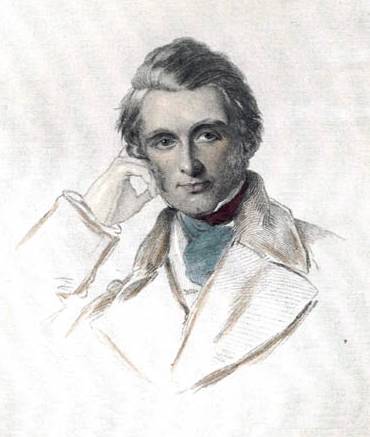Light, with reference to the tone it induces on objects, is either to be considered as neutral and white, bringing out local colours with fidelity; or coloured, and consequently modifying these local tints with its own. But the power of pure white light to exhibit local colour is strangely variable. The morning light of about nine or ten is usually very pure; but the difference of its effect on different days, independently of mere brilliancy, is as inconceivable as inexplicable. Every one knows how capriciously the colours of a fine opal vary from day to day, and how rare the lights are which bring them fully out. Now the expression of the strange, penetrating, deep, neutral light, which, while it alters no colour, brings every colour up to the highest possible pitch and key of pure harmonious intensity, is the chief attribute of finely toned pictures by the great colourists, as opposed to pictures of equally high tone, by masters who, careless of colour, are content, like Cuyp, to lose local tints in the golden blaze of absorbing light.
....
the positive hue, namely, which it may itself possess, of course modifying whatever local tints it exhibits, and thereby rendering certain colours necessary, and certain colours impossible. Under the direct yellow light of a descending sun, for instance, pure white and pure blue are both impossible; because the purest whites and blues that nature could produce would be turned in some degree into gold or green by it.
MP I, p. 270
"There are two qualities of light most carefully to be distinguished in speaking of the tone of a picture. 1st. Its own actual colour, which falls more or less on everything which it touchesŕneutralizing the colours existing in the objects themselves. Such is the well-known pure rose-colour which the rays of the sun assume five minutes before sunset. This colour is scarcely ever seen except on mountains and clouds, for the sun is too low before the tint is taken to permit its falling clear upon objects on a level with it, but sometimes, with a sea horizon, and a perfectly clear sky, it may be seen low. I adduce it as the most positive and overpowering tint of light I know, for no colour stands before green or blue or whatever it may be, all are turned nearly pure rose by it. It is of course seen in its greatest purity on the Alps, but often occurs very pure on the highest clouds, not the cumuli, but the streaky uppermost bars at sunset. I have seen it once at Venice, of extraordinary intensit, so totally overwhelming every local tint within its reach, as to admit of nothing like a guess at their actual colour, the rose appearing inherent and positive in them. The trees in the Botanic Gardens, especially, which were of a pure pale green (it was May) became not merely russet but pure red."
....
the positive hue, namely, which it may itself possess, of course modifying whatever local tints it exhibits, and thereby rendering certain colours necessary, and certain colours impossible. Under the direct yellow light of a descending sun, for instance, pure white and pure blue are both impossible; because the purest whites and blues that nature could produce would be turned in some degree into gold or green by it.
MP I, p. 270
"There are two qualities of light most carefully to be distinguished in speaking of the tone of a picture. 1st. Its own actual colour, which falls more or less on everything which it touchesŕneutralizing the colours existing in the objects themselves. Such is the well-known pure rose-colour which the rays of the sun assume five minutes before sunset. This colour is scarcely ever seen except on mountains and clouds, for the sun is too low before the tint is taken to permit its falling clear upon objects on a level with it, but sometimes, with a sea horizon, and a perfectly clear sky, it may be seen low. I adduce it as the most positive and overpowering tint of light I know, for no colour stands before green or blue or whatever it may be, all are turned nearly pure rose by it. It is of course seen in its greatest purity on the Alps, but often occurs very pure on the highest clouds, not the cumuli, but the streaky uppermost bars at sunset. I have seen it once at Venice, of extraordinary intensit, so totally overwhelming every local tint within its reach, as to admit of nothing like a guess at their actual colour, the rose appearing inherent and positive in them. The trees in the Botanic Gardens, especially, which were of a pure pale green (it was May) became not merely russet but pure red."

No comments:
Post a Comment